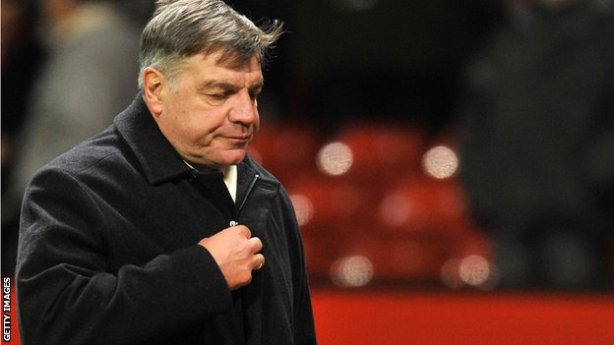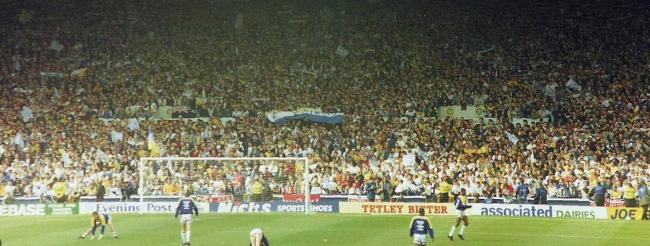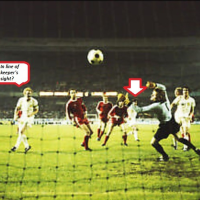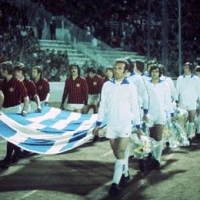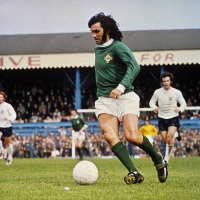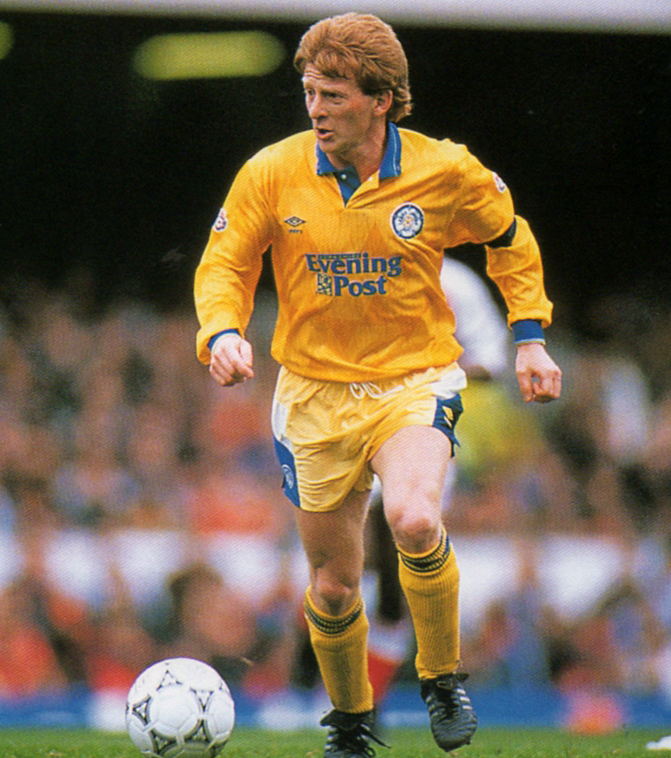A journey further back in time for this week’s Memory Match, to the golden, hazy days of the late seventies. This was a post-glory era Leeds United, but not too bad a side for all that – especially during the early part of Jimmy Adamson’s Elland Road managership. These were the days when the famous old stadium was dominated from all four corners by the tallest floodlights in Britain, towering 260 feet into the Yorkshire sky, and illuminating proceedings with their distinctive diamond-shaped arrays of 220 lamps each. Genial Jim Callaghan was Old Labour’s last Prime Minister before Maggie Thatcher took charge for the Tories, we said goodbye to two long-running police drama series in Z-Cars and The Sweeney and songs from the soundtrack of hit musical Grease figured large in the singles charts along with the likes of Kate Bush, the Bee Gees and Boney M.
late seventies. This was a post-glory era Leeds United, but not too bad a side for all that – especially during the early part of Jimmy Adamson’s Elland Road managership. These were the days when the famous old stadium was dominated from all four corners by the tallest floodlights in Britain, towering 260 feet into the Yorkshire sky, and illuminating proceedings with their distinctive diamond-shaped arrays of 220 lamps each. Genial Jim Callaghan was Old Labour’s last Prime Minister before Maggie Thatcher took charge for the Tories, we said goodbye to two long-running police drama series in Z-Cars and The Sweeney and songs from the soundtrack of hit musical Grease figured large in the singles charts along with the likes of Kate Bush, the Bee Gees and Boney M.
Leeds at this point were a club still trying to re-establish themselves as a success following a distinct decline from the greatness of Don Revie’s all-conquering United warriors. The previous two seasons had seen progress to both domestic semi-finals, but defeat to Man Utd in the FA Cup, and Brian Clough’s Nottingham Forest in the League Cup had blocked the path to Wembley on each occasion. Billy Bremner had moved on, Norman Hunter had gone – but the home crowd had a new favourite in Tony Currie, one of the few players who could genuinely live up to the sobriquet of “Midfield Maestro”. Currie had been signed from Sheffield United in the summer of 1976, and as the 78/79 season dawned he was surely in the prime of his career, shining for club and country alike, pulling the strings which controlled the team’s performance and frequently doing just as he pleased against helpless opponents.
This season had started with the surprise appointment of former Celtic manager Jock Stein to replace the sacked Jimmy Armfield. I still remember being on holiday in Spain, and my Dad chucking a hard-to-obtain English newspaper across at me with the headline “Stein For Leeds” on the back. I had been delighted, but sadly Big Jock’s stay at Elland Road was a mere 44 days before he left to take up his dream job as Scotland manager. So it was Adamson’s Army which greeted the teams on a bleak November afternoon as newly-promoted Southampton provided the opposition. Leeds’ home form had been reasonable, with a draw against West Brom and a narrow defeat to Arsenal in the previous five games, though Birmingham and Derby had both been convincingly beaten, and there had been a welcome 2-1 victory over Chelsea. Attendance levels though were relatively disappointing other than for the traditionally attractive matches against top teams, and a fairly sparse crowd of 23592 turned up for what was, on the face of it, a mundane fixture.
Leeds started as they preferred, attacking the South Stand end of the ground so as to save the Kop for a second-half assault, and they had the breakthrough after only fourteen minutes. Trevor Cherry, coming out of defence, played a probing ball up field where the burly Ray Hankin rose to head downwards to little Brian Flynn. United’s pocket dynamo was always adept at picking up possession in dangerous areas and making good use of the ball, and he was quick to scurry across the edge of the Saints penalty area towards the right, where he neatly slipped a pass to Arthur Graham. The Scottish winger was well-known for his ability to cut in from either wing, and once he got the ball in space on either foot, he could be quite lethal, as he proved now. Moving back infield, he easily evaded a defender before turning smartly to fire left-footed past former Halifax ‘keeper Terry Gennoe into the bottom right-hand corner. It was a clinical finish, giving the Southampton stopper no chance at all.
Eight minutes later, the lead was doubled, and this was a collectors’ item of a goal. Not since Boxing Day 1975 had Paul Madeley troubled the scorers, but here he was suddenly in what was nose-bleed territory for him, just outside the opposition area as Graham rolled in a pass from the right. United’s Rolls-Royce, as he had been dubbed, was a Mr Versatile of many years standing, having worn every outfield number for Leeds, but he was never exactly prolific in front of goal. Now though he seized on Graham’s pass and struck a left foot shot which took a cruel deflection, hopelessly wrong-footing Gennoe who could only watch as the ball bobbled into the net. 2-0 to United who were cruising at half-time, having been rather unluckily denied a third when John Hawley’s header thudded against an upright after a flowing move down the left.
The second half was only ten or so minutes old when one of the most famous Leeds United goals in living memory drew rapturous applause from the fans massed behind the goal at the Gelderd End. Tony Currie had been in full-on matador mode all day, taunting opponents with his mastery of possession, effortless control, trademark step-over and change of pace. His range of passing on form like today’s was almost Giles-esque, and there really is no higher praise than that. It had always looked like being Currie’s match to dominate, and now he scored the goal that cemented his place in United folklore. Snatching possession midway inside the Saints half, Currie mastered a lively bouncing ball before advancing on a nervously retreating Chris Nicholl. Rather than doing anything so mundane as beating his man, Currie looked up and, using the Saints defender as a shield, he simply bent the ball around him on a beautiful, curving trajectory, past the diving Gennoe to nestle in the far right-hand corner of the goal.
“Oh, my goodness!” intoned an awestruck Martin Tyler commentating for Yorkshire TV, “…and Tony Currie milks the applause that is so deserved.”

The rout of the Saints was complete on 65 minutes, when a Trevor Cherry cross from deep on the right caught the visitors’ defence hopelessly square, leaving Hankin in space and onside. Yugoslav defender Ivan Golac, who had never scored in English football until today, now broke his duck in the most undesirable fashion, chasing back nobly to dispossess Hankin who was casually weighing up his options, but tragically succeeding only in lifting the ball over his ‘keeper and into his own net for 4-0.
For much of the remaining 25 minutes, Leeds seemed to take their foot off the gas somewhat, and allowed a Southampton side – who had, in truth, battled well throughout – a number of pots at David Harvey’s goal. The Leeds ‘keeper though, unaccountably frozen out of a Scottish International side that could well have used his agility and experience, was equal to everything thrown at him, and preserved a clean sheet without being troubled unduly.
It hadn’t been a fantastic match, or indeed an especially memorable one, apart from two superlative goals from Graham and Currie. History shows, too, that Southampton would have the last laugh that season, coming back from trailing 2-0 against Leeds United in the first leg of the League Cup semi-final at Elland Road, to draw that game 2-2. They then completed the job with a 1-0 victory in the second leg at The Dell, going through to lose the Wembley final against Nottingham Forest.
But for United it was the season that saw us back into European competition for the first time since our ill-fated European Cup Final against Bayern four years previously, and the Saints win contributed its fair share to that achievement. Sadly though Tony Currie was soon to depart, his then wife apparently homesick for London. He duly joined QPR and eventually graced Wembley at club level himself as Rangers played Tottenham in the FA Cup Final of 1982, before injury drew a close to a flamboyant and entertaining career. Leeds without Currie were never quite the same force again, and we were now on the downward spiral to eventual relegation in the 1981-82 season.
In many ways then 1978-79 was United’s last hurrah in the top flight, our last decent stab at competing in the top league until Howard Wilkinson restored that status in 1990; and Tony Currie was certainly in my opinion the last real Leeds Legend of the immediate post-Revie era. For me, he was one of the greatest, and I mourned his departure more than most I have witnessed over the years. It felt like the end of an era when he went, and so it ultimately proved to be. But Currie left us with some magical memories, perhaps the greatest of which remains that terrific banana shot at the Kop End, a goal worthy of any superstar, and one fit to grace any occasion.
Next: Memory Match No. 6: West Ham Utd 1, Leeds United 5. Upton Park was frequently a happy hunting ground for Leeds, and the Whites’ cause was aided on this occasion by a couple of Hammers dismissals in a May 1999 game where – for once – we seemed to get the rub of the green where the ref was concerned.








